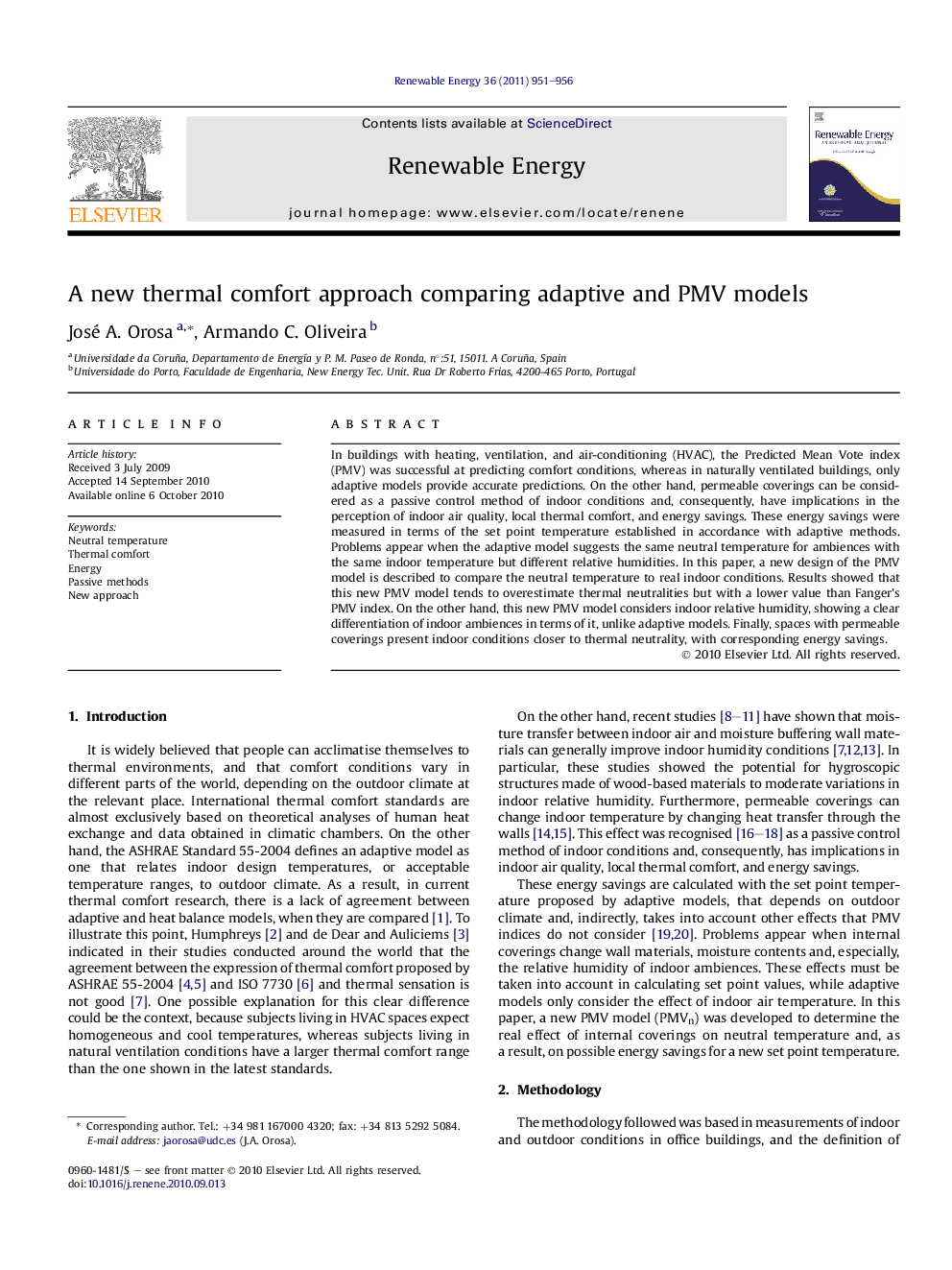| کد مقاله | کد نشریه | سال انتشار | مقاله انگلیسی | نسخه تمام متن |
|---|---|---|---|---|
| 301454 | 512506 | 2011 | 6 صفحه PDF | دانلود رایگان |

In buildings with heating, ventilation, and air-conditioning (HVAC), the Predicted Mean Vote index (PMV) was successful at predicting comfort conditions, whereas in naturally ventilated buildings, only adaptive models provide accurate predictions. On the other hand, permeable coverings can be considered as a passive control method of indoor conditions and, consequently, have implications in the perception of indoor air quality, local thermal comfort, and energy savings. These energy savings were measured in terms of the set point temperature established in accordance with adaptive methods. Problems appear when the adaptive model suggests the same neutral temperature for ambiences with the same indoor temperature but different relative humidities. In this paper, a new design of the PMV model is described to compare the neutral temperature to real indoor conditions. Results showed that this new PMV model tends to overestimate thermal neutralities but with a lower value than Fanger’s PMV index. On the other hand, this new PMV model considers indoor relative humidity, showing a clear differentiation of indoor ambiences in terms of it, unlike adaptive models. Finally, spaces with permeable coverings present indoor conditions closer to thermal neutrality, with corresponding energy savings.
Journal: Renewable Energy - Volume 36, Issue 3, March 2011, Pages 951–956